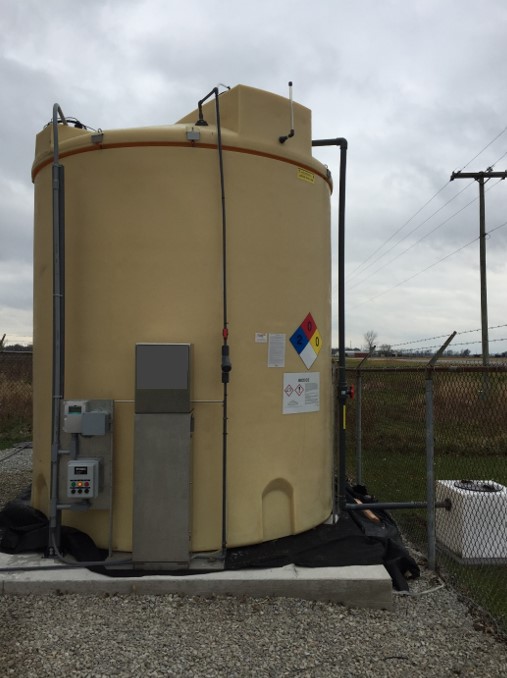Nitrates
Bacteria in wastewater collection systems will use dissolved oxygen, nitrate, and sulfate as oxygen sources for respiration, in that order of preference. Dissolved oxygen is usually present in fresh wastewater, but is rapidly depleted by biological activity. There is typically very little nitrate present in the wastewater, while sulfate is typically abundant. Since little or no nitrate is available, the bacteria begin utilizing sulfate when the dissolved oxygen is depleted. The byproduct of the sulfate uptake process is dissolved sulfide. The dissolved sulfide combines with hydrogen ions to form hydrogen sulfide, causing odor and corrosion problems.
Nitrate solutions (calcium nitrate and sodium nitrate) are typically fed at pumping stations to control sulfide formation in force mains by providing an alternate source of oxygen. Feeding nitrate solutions to control sulfide formation and release is the most common form of chemical treatment in collection systems but there are many others including: magnesium hydroxide, iron salts such as ferrous chloride, hydrogen peroxide, enzymes, liquid oxygen and many other proprietary blends.
Typical Chemical Storage Tank and Control Panel
Most nitrate solutions are considered non-hazardous and are relatively easy and safe to store, handle, and inject. The chemicals are typically injected into pump station wetwells through the use of chemical metering pumps.
Applicable Treatment Processes
Wetwells, force mains and downstream gravity sewers.

